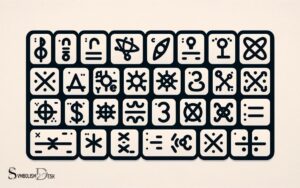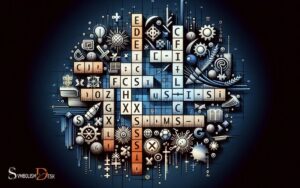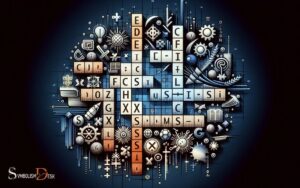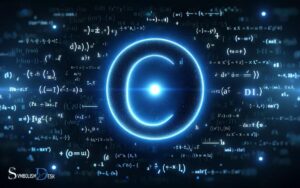What Is Symbolic Notation in Math? Relationships!
Symbolic notation in mathematics is the use of symbols and figures to represent numbers, operations, relationships, or values in order to convey mathematical ideas succinctly and precisely.
This notation is essential for performing algebraic calculations, writing equations, and expressing formulas.
Symbolic notation allows mathematicians and students to articulate complex mathematical concepts in a universal language that can be understood regardless of spoken language.
Symbols such as + (plus), – (minus), = (equals), and letters like x or y to represent variables, are the building blocks of this notation system.
Here are some key points about symbolic notation:
Symbolic notation, such as π for the mathematical constant Pi, is indispensable in mathematics, providing a universal shorthand that transcends linguistic barriers.
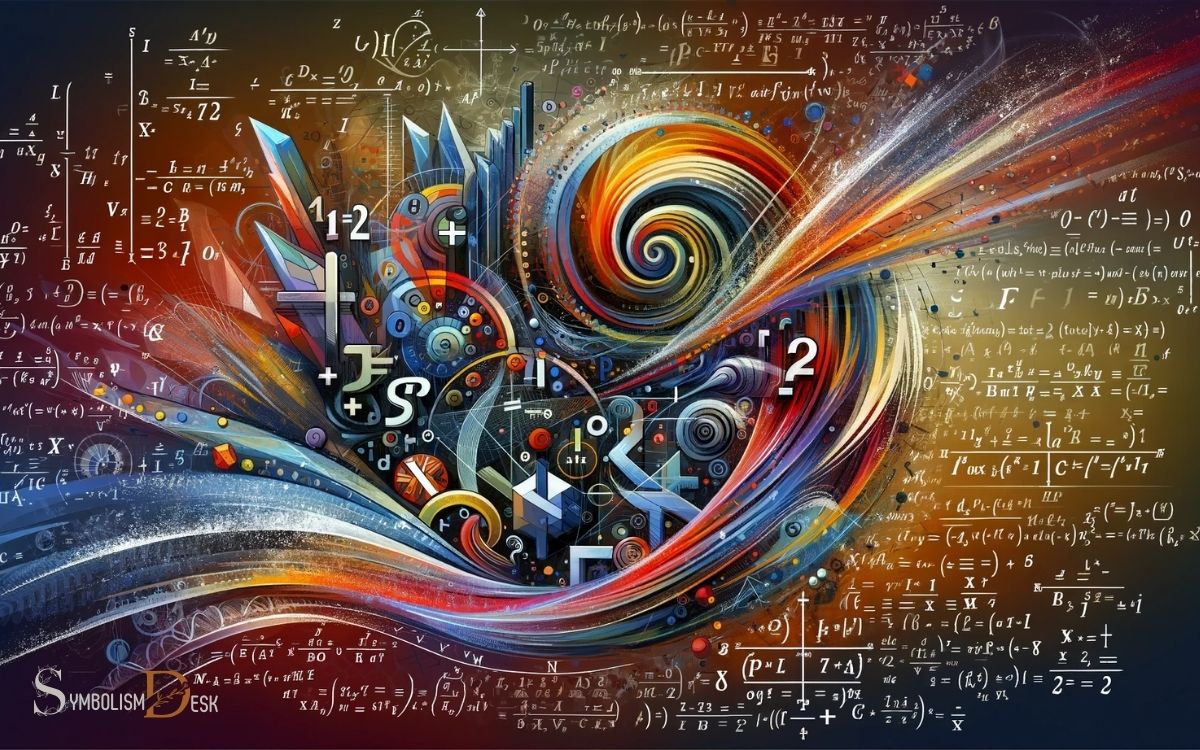
Key Takeaway
The Basics of Symbolic Notation
When delving into the basics of symbolic notation in math, it is essential to understand the fundamental principles that govern its use.
Symbolic notation is a system of representing mathematical ideas using symbols and variables, allowing for concise and precise communication of complex concepts.
It provides a way to generalize mathematical expressions and equations, making it easier to manipulate and solve problems.
Understanding the basic symbols such as “+” for addition, “-” for subtraction, “x” for multiplication, and “/” for division is crucial for building a strong foundation in mathematical notation.
Moreover, mastering the use of variables such as x, y, and z enables the representation of unknown quantities and relationships between different entities.
This foundational knowledge serves as a stepping stone for more advanced mathematical concepts and problem-solving techniques.
History of Symbolic Notation
The evolution of symbolic notation in mathematics has been influenced by various cultures and mathematicians throughout history, shaping the way mathematical concepts are expressed and communicated.
From ancient civilizations like the Babylonians and Egyptians to the contributions of Greek and Indian mathematicians, each culture has left its mark on the development of symbolic notation.
The history of symbolic notation is also marked by significant advancements during the Renaissance and the Enlightenment, with mathematicians such as Descartes and Leibniz introducing new symbols and notations that revolutionized mathematical communication.
The table below illustrates the evolution of symbolic notation by showcasing key developments and the cultures or mathematicians associated with them”:
| Development | Culture/Mathematician |
|---|---|
| Babylonian numerals | Babylonians |
| Euclidean geometry | Ancient Greeks |
| Indian numerals | Indian mathematicians |
| Cartesian coordinates | Descartes |
Importance of Symbolic Notation in Math
The symbolic notation in math serves as an efficient communication tool, allowing for the concise representation of complex concepts.
It simplifies the expression of mathematical ideas and serves as a universal language in the field of mathematics, enabling communication across different cultures and languages.
This form of notation plays a crucial role in making mathematical concepts accessible and understandable to a wide audience.
Efficient Communication Tool
How does symbolic notation in mathematics serve as an efficient communication tool, and what significance does it hold in mathematical discourse?
Symbolic notation in math is a clear, precise, and accessible way to convey complex mathematical ideas. It allows mathematicians to express intricate concepts using concise symbols, reducing lengthy explanations into compact representations. This efficiency not only streamlines communication among mathematicians but also enables students to grasp advanced topics more readily. The use of symbolic representation in mathematics fosters a universal language, breaking down barriers across different cultures and educational backgrounds. As a result, it promotes collaboration and innovation in mathematical research and problem-solving, making it an essential tool in the field.
This efficiency is crucial for sharing ideas across borders and cultures, as mathematical symbols transcend language barriers.
Symbolic notation also enables quick manipulation and analysis of mathematical expressions, aiding in problem-solving and theorem proving.
Furthermore, it provides a standardized language for mathematicians to communicate with each other, ensuring consistency and clarity in mathematical discourse.
Below is a table illustrating the significance of symbolic notation in mathematics:
| Significance | Explanation | Example |
|---|---|---|
| Conciseness | Reduces lengthy explanations into compact representations | ∫ f(x) dx |
| Standardization | Provides a standardized language for communication among mathematicians | E=mc^2 |
| Global Accessibility | Transcends language barriers, allowing for the sharing of ideas across cultures | πr^2 |
This efficiency not only simplifies complex concepts but also streamlines the exchange of mathematical ideas.
Simplifies Complex Concepts
Symbolic notation in math simplifies complex concepts by allowing for precise representation and manipulation of mathematical ideas.
It achieves this by:
- Providing a concise way to express intricate mathematical relationships.
- Allowing for the generalization of concepts through abstract symbols and variables.
- Enabling mathematicians to work with large-scale problems more efficiently.
- Enhancing clarity by removing ambiguity in mathematical expressions.
- Allowing for the development of advanced mathematical theories and models.
This clear, precise, and accessible language of symbols facilitates the understanding and communication of complex mathematical ideas. Such a tool is crucial in advancing mathematical research and applications.
The next section will delve into how symbolic notation serves as a universal language in math, further highlighting its importance in the field.
Universal Language in Math
The utilization of symbolic notation as a universal language in mathematics significantly aids in fostering precision and efficiency in the communication and comprehension of complex mathematical concepts.
By representing mathematical ideas using symbols and expressions, this universal language transcends linguistic and cultural barriers, enabling mathematicians and students worldwide to communicate ideas with clarity, precision, and accessibility.
This common language allows for concise representation of complex concepts, reducing the need for lengthy verbal or written explanations.
Moreover, the use of symbolic notation streamlines calculations, making mathematical processes more efficient.
Understanding this universal language is crucial for anyone studying or working in mathematics, as it facilitates the exchange of ideas and knowledge across borders and languages, contributing to the advancement of mathematical understanding and discovery.
This importance underscores the need to familiarize oneself with the common symbols used in symbolic notation.
Common Symbols Used in Symbolic Notation
Commonly used symbols in symbolic notation include the plus sign (+), minus sign (-), multiplication sign (×), and division sign (÷).
These symbols are fundamental in expressing mathematical operations and equations. They are universally recognized and form the basis for communicating mathematical concepts.
The following are examples of commonly used symbols in symbolic notation:
- Plus sign (+): Indicates addition.
- Minus sign (-): Denotes subtraction.
- Multiplication sign (×): Represents multiplication.
- Division sign (÷): Signifies division.
- Equals sign (=): Shows equality.
These symbols are essential for expressing mathematical relationships and operations in a clear, precise, and accessible manner. Understanding these symbols is crucial for comprehending mathematical expressions and equations. Understanding radical symbols, such as √, is especially important for working with concepts like square roots and higher order roots. Additionally, mastery of mathematical symbols allows for effective communication and collaboration in problem-solving and mathematical analysis. Without a solid grasp of these symbols, students may encounter significant challenges when navigating through various mathematical concepts and applications.
Applications of Symbolic Notation in Mathematics
Frequently, mathematical equations and formulas are expressed using symbolic notation to represent complex relationships and operations.
This notation is extensively applied in various mathematical fields. In algebra, symbolic notation is used to manipulate and solve equations, making it easier to represent and solve problems involving variables.
In calculus, symbolic notation is crucial for expressing and solving intricate mathematical concepts such as derivatives and integrals.
Additionally, in linear algebra, symbolic notation is employed to represent vectors, matrices, and linear transformations, enabling concise representation of complex systems.
Furthermore, in statistics, symbolic notation is utilized to denote probability distributions, making it easier to analyze and interpret data.
Overall, symbolic notation plays a vital role in simplifying the representation and manipulation of complex mathematical concepts, making it an indispensable tool in various mathematical applications.
Challenges in Understanding Symbolic Notation
One significant challenge in understanding symbolic notation in mathematics is the interpretation of complex expressions and operations.
This complexity can pose several challenges for learners, including:
- Difficulty in understanding the order of operations
- Ambiguity in the meaning of symbols
- Challenges in simplifying and manipulating expressions
- Misinterpretation of notation due to lack of context
- Confusion arising from the use of variables and constants
Understanding these challenges is crucial for educators to provide targeted support and for learners to seek appropriate resources.
By addressing these challenges, individuals can develop a clearer, more precise, and accessible understanding of symbolic notation in mathematics.
Tips for Mastering Symbolic Notation
How can learners effectively navigate the complexities of symbolic notation in mathematics to enhance their understanding and proficiency?
Here are tips for mastering symbolic notation:
- Understand the basics: Start by grasping the fundamental symbols and their meanings to build a strong foundation.
- Practice regularly: Repetition is key to internalizing symbolic notation. Regular practice helps reinforce understanding.
- Seek clarification: Don’t hesitate to ask for help or seek additional resources when encountering challenging notation.
- Break it down: When faced with complex notation, break it into smaller parts to make it more manageable.
- Use resources: Utilize textbooks, online tutorials, and educational platforms to access different explanations and examples.
- Stay patient: Mastering symbolic notation takes time and persistence. Embrace the learning process.
Future Trends in Symbolic Notation
As technology continues to advance, the future of symbolic notation in math is poised to undergo significant changes. Two key points to consider are the evolving computational capabilities and the integration of symbolic notation with AI technology.
These developments have the potential to revolutionize the way mathematical expressions are manipulated and interpreted, shaping the future landscape of mathematical notation.
Evolving Computational Capabilities
Advancements in computational capabilities are driving the future trends in symbolic notation within the field of mathematics. This evolution is shaping the way mathematicians and scientists approach problem-solving and data analysis.
Key trends in evolving computational capabilities include:
- Integration of artificial intelligence and machine learning for symbolic computation
- Development of high-performance computing systems for complex symbolic calculations
- Utilization of cloud computing for collaborative symbolic notation projects
- Implementation of symbolic computation software with user-friendly interfaces
- Exploration of quantum computing for advanced symbolic manipulation
These trends aim to make symbolic notation more clear, precise, and accessible for researchers and practitioners, facilitating more efficient and innovative mathematical solutions.
Integration With AI Technology
The integration of AI technology into symbolic notation in mathematics represents a significant advancement that is revolutionizing the way mathematical problems are approached and solved.
AI technology enables the automation of complex calculations, allowing for the rapid manipulation of symbolic expressions and the efficient solving of intricate mathematical problems.
By utilizing machine learning algorithms, AI can recognize patterns and make inferences, leading to more streamlined and accurate solutions.
This integration also facilitates the development of intelligent tutoring systems that can provide personalized assistance to students, enhancing their understanding of symbolic notation and its applications in mathematics.
Furthermore, AI technology offers the potential for discovering new mathematical relationships and theorems by analyzing vast amounts of symbolic data, thereby pushing the boundaries of mathematical knowledge.
Conclusion
Symbolic notation in mathematics is a vital language that allows for concise and precise communication of mathematical concepts.
Its historical significance and widespread use in various mathematical applications highlight its importance in the field.
While mastering symbolic notation may pose challenges, with dedication and practice, individuals can improve their understanding and application of these symbols.
As the field of mathematics continues to evolve, so too will the trends and advancements in symbolic notation.



